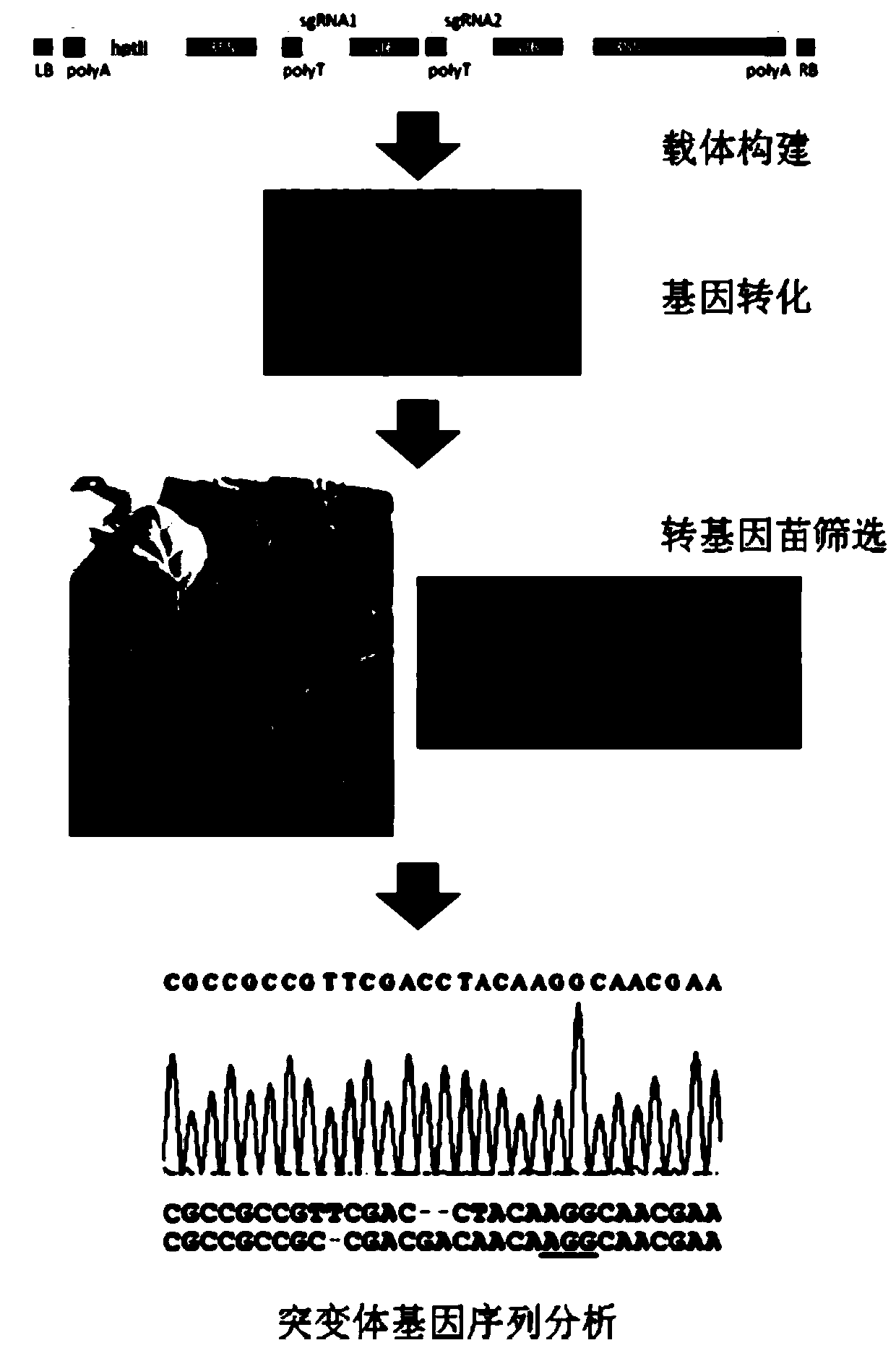Platanus mutant, method for obtaining platanus mutant and application of platanus mutant or method
A technology of mutants and syringa, applied in the field of transgenics, can solve the problems of poor orientation and long breeding time of sycamore, and achieve the effect of high orientation, simple method and high efficiency
- Summary
- Abstract
- Description
- Claims
- Application Information
AI Technical Summary
Problems solved by technology
Method used
Image
Examples
Embodiment 1
[0095] Cloning and sequencing of the pollen allergen gene Plaa1 from Platanus annuus
[0096] (1) Select the leaves of Platanus x acerifolia as samples, and use a genome extraction kit to extract Platanus genomic DNA. The sequence of the fifth primer is shown in SEQ ID No.3, which is: 5'-tacgcggggaacaaaacaatccaat-3'; the sixth primer The sequence shown in SEQ ID No.4 is: 5'-ccgaagagggccaaatatcataca-3', and the Platanus pollen allergen plaa1 gene is obtained by PCR amplification reaction.
[0097] The PCR amplification reaction system is as follows: DNA of Platanus leaves: 5uL, fifth primer: 5uL, sixth primer: 5uL, 2×Taq mix: 25uL, Mg2+: 1uL glycerol: 1uL, ddH2O: 12uL.
[0098] The PCR amplification reaction conditions are as follows: pre-denaturation at 95°C for 5 min; denaturation at 95°C for 30 s, annealing at 56°C for 30 s, extension at 72°C for 1 min, 40 cycles; extension at 72°C for 10 min, and storage at 4°C.
[0099] (2) Obtain the PCR product of the Platanus pollen al...
Embodiment 2
[0101] Construction of genome editing vectors
[0102] (1) Design two sgRNA sequences according to the Platanus sp. gene sequence (SEQ ID No.5), which are the first gRNA target sequence (target T1): CAGCGCCGATATTGTTCAGG and the second gRNA target sequence (target T2): TTCTGCGCGAAGTCTCTTGG.
[0103] Synthesize the sense and antisense strands of the two sgRNA sequences with adapters respectively, the underlined part is the adapter sequence, and form the following two double-stranded DNAs after mixing and annealing:
[0104] Design the first primer SEQ ID No.6 of the first gRNA target sequence: (5'- ATTG CAGCGCCGATATTGTTCAGG-3') and the second primer SEQ ID No.7 (3'-GTCGCGGCTATAACAAGTCCCAAA-5') were mixed and annealed to form the first gRNA target sequence;
[0105] Design the third primer SEQ ID No.8 of the second gRNA target sequence: (5'- ATTG TTCTGCGCGAAGTCTCTTGG-3') and the fourth primer SEQ ID No.9 (3'-AAGACGCGCTTCAGAGAACCCAAA-5') were mixed and annealed to form the se...
Embodiment 3
[0110] genetic transformation
[0111] (1) Obtain the seeds of the mature cones of robust adult Platanus chinensis; the seeds are cleaned to remove the fluff on the surface of the seeds, and then sterilized with 75% alcohol for 40 seconds, 0.1% mercuric chloride for 40 minutes, and rinsed with sterile water for 3 times to obtain Sterilized seeds: placing the sterilized seeds on wet filter paper, and carrying out dark culture at 25° C. for 2 to 3 days to obtain germinated seeds;
[0112] (2) Obtain the germ of the seed. The carrier to be transformed is a 0.6 μm gold powder particle with a diameter of 0.6 μm coated with a genome editing carrier plasmid. The transformation parameters are set to 0.6 μm gold powder and 900 PSI pressure, and the distance between the transformation carrier and the sample is 6 cm. Using BIO - Transforming the genome editing vector into the embryo with the PDS-1000 / He gene gun of RAD to obtain a transformation product.
[0113] (3) Cultivating the tra...
PUM
 Login to View More
Login to View More Abstract
Description
Claims
Application Information
 Login to View More
Login to View More - R&D
- Intellectual Property
- Life Sciences
- Materials
- Tech Scout
- Unparalleled Data Quality
- Higher Quality Content
- 60% Fewer Hallucinations
Browse by: Latest US Patents, China's latest patents, Technical Efficacy Thesaurus, Application Domain, Technology Topic, Popular Technical Reports.
© 2025 PatSnap. All rights reserved.Legal|Privacy policy|Modern Slavery Act Transparency Statement|Sitemap|About US| Contact US: help@patsnap.com


